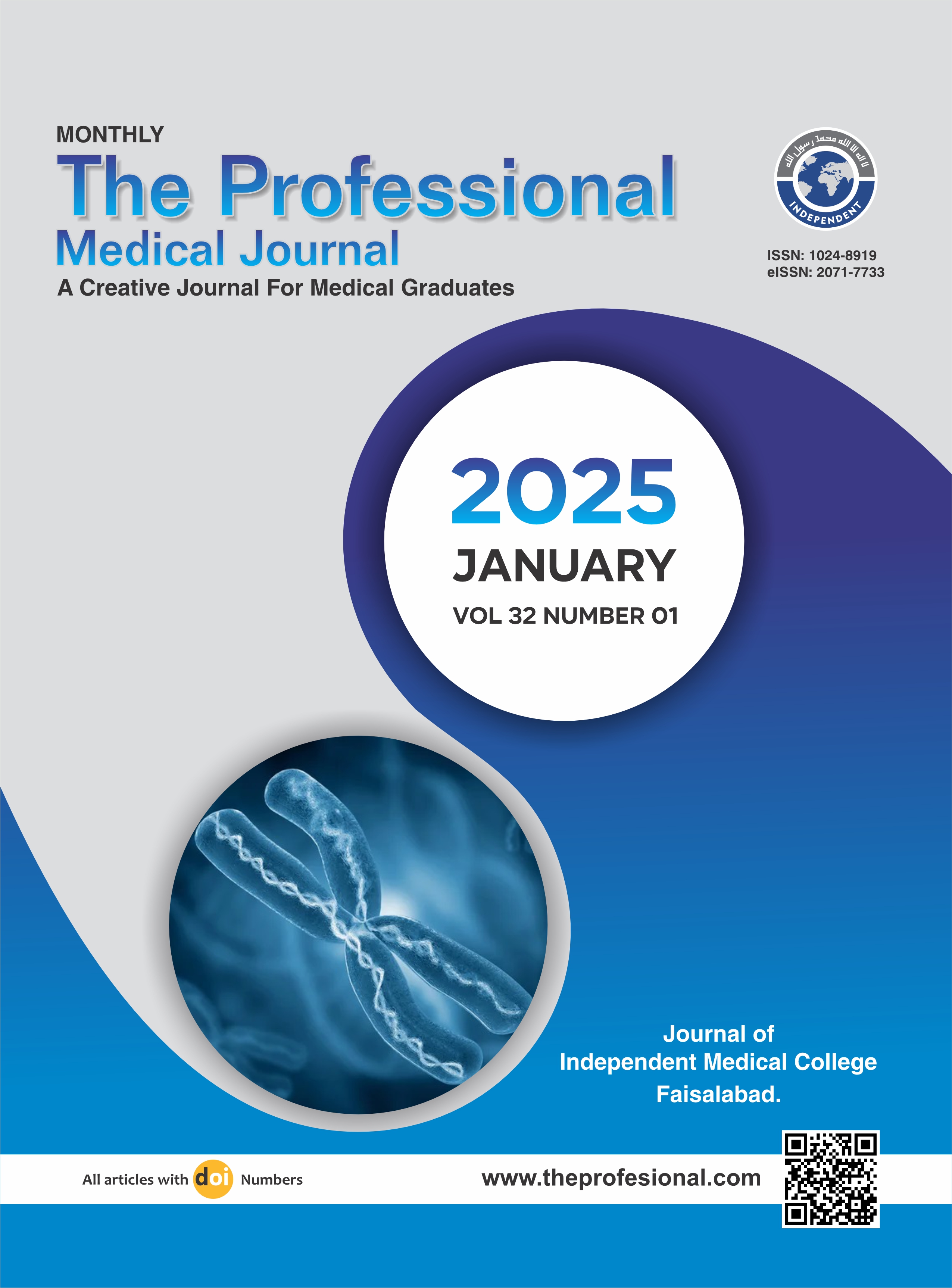Efficacy of tamsulosin in patients with lower urinary tract symptoms due to benign prostate enlargement and having intravesical prostate protrusion.
DOI:
https://doi.org/10.29309/TPMJ/2025.32.01.8221Keywords:
Benign Prostate Enlargement (BPE), Intravesicle Prostate Protrusion (IPP), International Prostate Symptom Score (IPSS), TamsulosinAbstract
Objective: To study the efficacy of Tamsulosin in patients with IPP due to BPE. Study Design: Descriptive study. Setting: Department of Urology, Madinah Teaching Hospital Faisalabad. Period: Oct 2020 to April 2021. Methods: After approval from ethical review comity and informed consent a total of 96 male patients between the ages 50-90 years who had LUTS due to benign prostate enlargement of ≥30g were included in the study. Patients with no IPP or having uncontrolled hypertension / diabetes were excluded from the study as well as those having LUTS due to any other etiology e.g. neurogenic bladder or bladder stone. IPSS was calculated for all the patients and entry was made in the research pro forma. All patients received Cap. Tamsulosin 0.4 mg at bedtime for 2 weeks. On follow up in outpatient department, IPSS was calculated again and any improvement of 3 points of the IPSS score was taken as significant and as an evidence of efficacy of Tamsulosin. All the data including any complication was collected and secured on the pro forma. Results: Pretreatment and post treatment mean IPSS was calculated to be 19.54 ± 5.87 and 17.27 ± 4.29 respectively. Frequency of efficacy of Tamsulosin in patients with Intravesical prostatic protrusion due to benign prostatic enlargement was recorded in 42.71% (n=41) whereas 57.29% (n=55) had no efficacy. Stratification with regards to grade of IPP shows that 12 of 25 cases of grade I, 19 of 40 cases in grade II and 10 of 31 cases in grade III had efficacy, p value was 0.23. Conclusion: We concluded that tamsulosin is effective in patients with intravesical prostatic protrusion due to benign prostatic enlargement, however, further trials are required to validate our results.
Downloads
Published
Issue
Section
License
Copyright (c) 2024 The Professional Medical Journal

This work is licensed under a Creative Commons Attribution-NonCommercial 4.0 International License.


